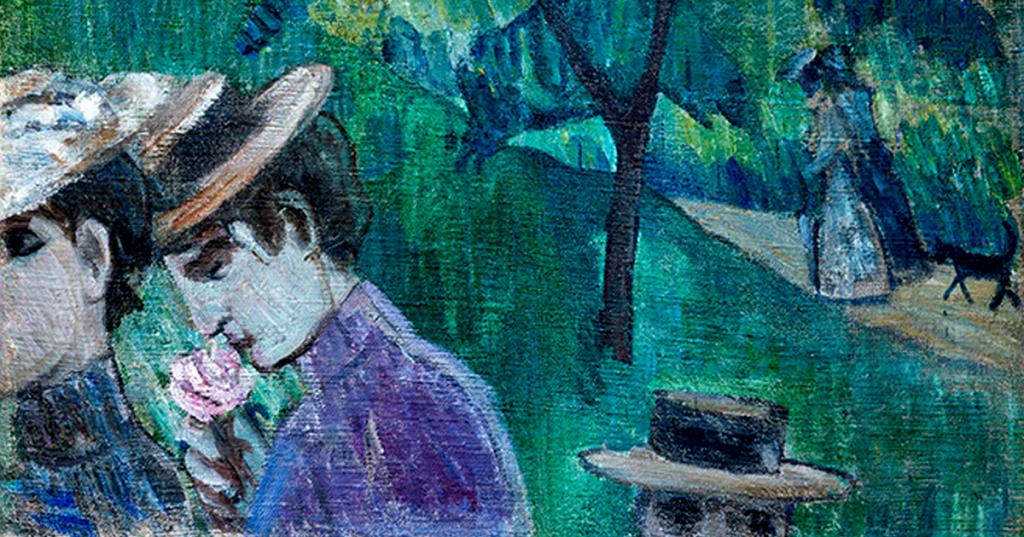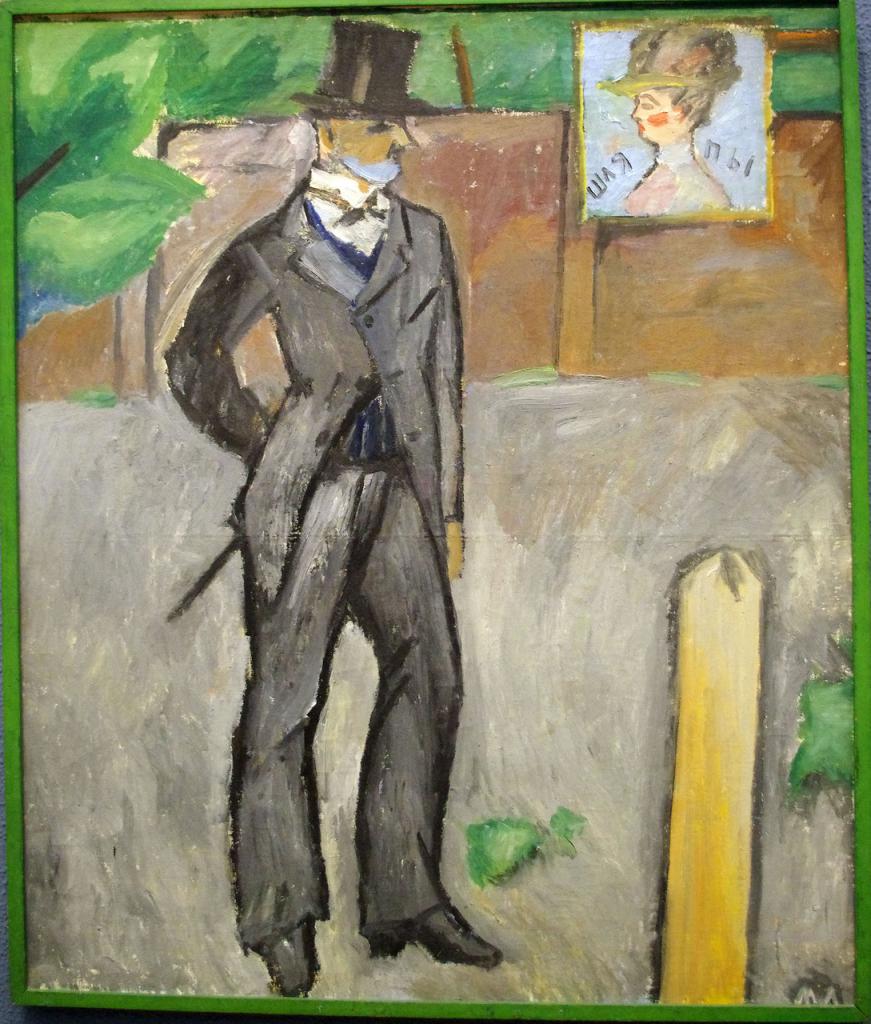Mikhail Fedorovich Larionov is a unique phenomenon of Russian and world culture. Painter, theater artist , graphic artist. He is tremendous as an avant-garde artist and theorist. The paintings of Mikhail Larionov and his personality left an indelible mark on world culture. He is significant as the founder of luchism, an original trend in Russian painting at the beginning of the twentieth century. But, for all the scale of his figure, he is underestimated in his homeland, insufficiently studied and studied. Ironically, Larionov, as a painter, for a long time remained in the shadow of his best student, colleague and wife, the brilliant Natalia Goncharova.
Childhood
Mikhail Larionov was born in 1881. His father served as a military paramedic and was on duty in the Kherson province, in southern Russia, a hundred kilometers from the Black Sea. It was there, in these hot and unusually piercing places, the childhood of the future artist passed. The observant boy had something to turn his attention to, because Tiraspol, like any southern city, was a dazzling mosaic of tribes, languages and traditions. This land covered the boy with a patchwork of blooming gardens, military marches, motley people, market crowds and market noise. Small zucchini, long stables, uncountable number of swallows, trembling sultry air and happiness, great happiness that announced the boy’s childhood. He then, when he grows up, until he leaves Russia forever, will come for the summer to his beloved Tiraspol.
School
When Misha Larionov was twelve years old, the family moved to Moscow. Life in the capital was calm and measured, Mikhail graduated from college and was preparing to connect his life with painting.
In those years, the paintings of Victor Borisov-Musatov had a particularly strong impression on Mikhail Larionov. Mikhail, who has been drawing since childhood, naturally enrolled at the School of Painting, Sculpture and Architecture. There, his bright, original talent was fully manifested, and his teachers were extraordinary - these were Valentin Serov, Konstantin Korovin, and Isaac Levitan. In the same school, Larionov met his future wife, artist Natalia Goncharova.
Impressionism
After college, the life of Mikhail Larionov spun in a bright round dance of various cultural movements. He, like many artists of that time, began his work with impressionism. Large series of works came out from under his brush, in the spirit of Claude Monet's landscapes. The paintings of Mikhail Larionov were very well received. He became a bright figure in the circle of creative intelligentsia, he was noticed by members of the World of Art association, and Sergey Diaghilev offered to participate in the 1906 Paris exhibition.

In Paris, the paintings of Larionov Mikhail Fedorovich and himself were waiting for great success. But not so much success as Paris itself inspired him and left a lasting impression. There he learned that Monet was no longer the core of world impressionism, this place was firmly taken by Paul Gauguin, Van Gogh and Cezanne. It was they who personified the novelty in world painting. Their expression possessed the minds of admirers and partial. Larionov breathed Paris, lived Paris, he visited exhibitions, explored museums, saved up materials for his future growth. But he did not become a follower of Fauvism, a fashionable trend in painting, unfolding before his eyes and overwhelmed Paris. Larionov looked deep into the very root of his creative quest, and there he saw something new inside. Having studied the geniuses of post-impressionism, he became an innovator. In his paintings, the artist Mikhail Larionov turned to primitivism.
1909-1914
His primitivism came from Russian lubok, from ancient peasant traditions. In this simplicity, Larionov discerned the fundamental power of archetypes and recognized far-reaching potencies in his uncomplicated folklore that awaited their understanding. Immersed in new ideas with his head, he showed unprecedented efficiency, it was then that a series of paintings by Mikhail Larionov “Franta”, “Hairdressers” appeared, at the same time his rayonism arose.

Larionov studied advertising signs, inscriptions and drawings on fences, and transformed these grains of the Russian spirit into gems of new color textures. In those same years, Larionov was engaged in graphics a lot and showed outstanding organizational skills. He established various associations of artists and arranged shocking exhibitions, the most famous of which are Jack of Diamonds, Donkey's Tail and Target. Larionov devoted a lot of time to designing unique poetic collections of his futurist friends: Velimir Khlebnikov, Alexei Kruchenykh and others. In all its manifestations, Larionov was an innovator and locomotive. He was looking for new ways, a new look at old objects, and the quintessence of these searches was luchism.
Luchism
In 1913, Larionov proclaimed the manifesto “Radiators and Future Prospects” and opened the era of pointlessness in painting. This was the beginning of Russian abstractionism. In luchism intertwined and reflected all the achievements of the artist in the presentation of color and texture. Objects as such do not exist in the concept of rayism; they are manifested only in the reflection and refraction of rays. And therefore, painting should be completely divorced from matter and expressed in new spatial forms, a new imposition of color and focus of thought.
At the Paris exhibition, the radiant paintings by Mikhail Larionov and Natalia Goncharova made a splash and received universal recognition. Larionov becomes famous, arranges a European tour, meets many celebrities, including Pablo Picasso, Guillaume Apollinaire, Jean Cocteau.
1915-1917
But at the peak of creative activity, the First World War invades the life of Mikhail Larionov. He returns to his homeland and goes to the front. In 1915, after a serious wound and concussion, while lying down in the hospital, Larionov came back to Paris, where a new metamorphosis of the master took place - he began to deal with the scenery for Sergei Diaghilev's ballets.
The artist meets the 1917 revolution in Paris and decides to stay in it forever. The Paris phase in the life of the master begins, the stage is long and ambiguous. He and Goncharova settle in the ryu of Jacques Callot and live in this apartment for the rest of their lives.
Paris stage
In the second half of his life, Larionov began to devote a lot of time and effort to literary creation, he wrote memoirs and articles on the history of art. The artist Larionov Mikhail Fedorovich in the paintings moved away from radiation and returned to graphics, still lifes and genre compositions. Something inconspicuous, but very important, very real, disappeared from his work.
In 1955, Mikhail Larionov and Natalya Goncharova officially formalized their relationship, and after fifty years of marriage, they became husband and wife. Mikhail Larionov died in 1964, in a suburb of Paris, two years after the death of his muse, Natalia Goncharova.
In 1989, Alexandra Tomilina, a long-standing friend of the family, handed over the archive of Mikhail Larionov to the Soviet government. So the master returned to his homeland.